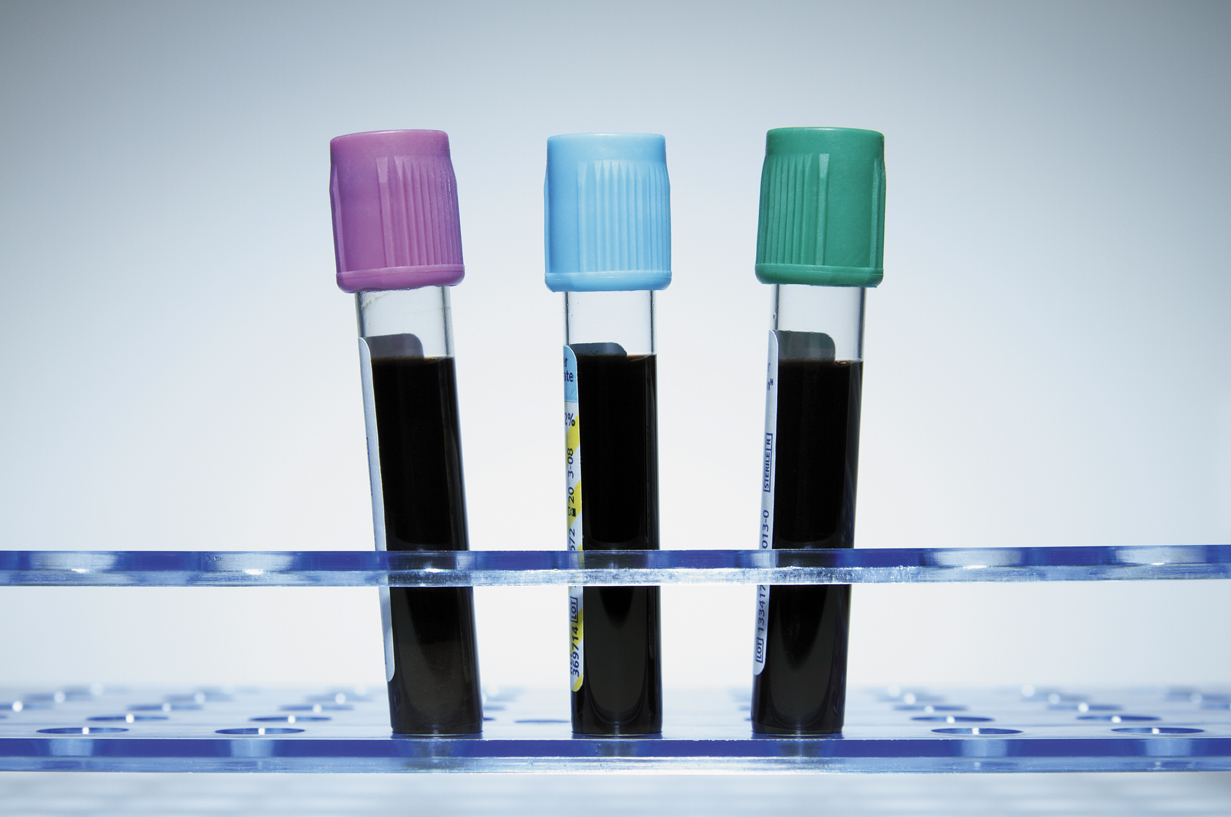
Labs naturally would like to minimize pre-analytical errors as much as possible, to improve the quality of blood test results, reduce the number of specimens requiring re-collection, reduce turnaround time, and improve patient management. Blood collection tubes (BCTs) typically have been regarded as inert specimen carriers; however, studies have shown that BCTs can contribute to pre-analytical errors.
We don’t fully understand how these devices affect blood samples, but they may have a greater influence on test results than many health professionals realize. BCT components, including tube walls, rubber stoppers, lubricants, anticoagulants, separator gels, clot activators, and surfactants, can affect the quality of specimens and accuracy of laboratory tests. These components and additives have the potential to alter the composition of serum and plasma fractions by adding constituents to blood, adsorbing elements, interacting with protein and cellular components, or altering the stability of analytes in blood specimens.
Other than increasing vigilance when inspecting laboratory test results and improving communication between the clinical laboratory and clinicians, laboratorians can’t do much to detect BCT problems readily without looking at population means (moving averages) of their assays. Following population means at regular timed intervals can alert the laboratory of potential problems with BCTs.
To evaluate interferences from collection device components in clinical tests, laboratorians should (1) test the same analyte with an alternative assay; (2) incubate the sample with the different parts of the collection device to identify the source of potential interferences; (3) contact both the collection device and assay manufacturers; (4) if necessary, file a medical device alert with the Food and Drug Administration; and (5) if possible, switch to a new BCT manufacturer.
For any new or substantially modified BCTs introduced to the laboratory, a well-planned validation protocol should be written and reviewed for scientific validity by qualified individuals. This protocol should describe the validation procedure in detail, include predefined acceptance criteria and statistical methods, and follow the policies and procedures related to testing human subjects established by the institution’s review board or ethics committee. Blood specimens from both patients and apparently healthy individuals should be collected and included in the tube validation study. This study also should include the entire blood collection system (needles, holders, tubing, etc.) rather than a particular tube or component.
To determine the accuracy of assay results obtained from new or substantially modified BCTs, labs should conduct a tube comparison study similar to that described in the CLSI EP9-A (1992) guideline. Specimens that cover the reportable range for each analyte should be evaluated with an adequate number of samples. This will provide sufficient power to conduct statistical analyses of the data. Linear regression analysis or a similar type of regression method and Bland-Altman type plots should be used to analyze the tube comparison data.
To assess imprecision of assay results collected in new or substantially modified BCTs, laboratorians can compare the variability of results for the samples collected in new tubes with the variability obtained from samples collected in their current BCTs. Another means to this end is replicate testing of quality control (QC) material and/or patient specimens, as described in the CLSI EP5-A (1992) guideline. For analytes that are physiologically undetectable or those that exist in low concentrations in healthy individuals, or to generate samples that cover the reportable range, samples should be spiked with the analyte of interest when feasible. The total number of assays for tube validation studies will depend on the intended use of the blood collection device. Laboratories can select for evaluation representative assays from different testing methodologies, such as ion-specific electrode, immunoassay, and spectrophotometry. CLSI GP-34A covers validation and verification of BCTs.
BCT-related problems are difficult to recognize in a timely manner because routine QC testing may not use the problematic collection devices. Likewise, proficiency testing will not detect BCT-related problems because proficiency specimens do not require collection with routinely used blood collection devices.
Comparing results for the control sera exposed and unexposed to BCTs should reveal adverse effects from tube additives, but this testing is uncommon in most clinical laboratories. It is also impractical for most because of the diversity of tubes used and frequent changes in tube lots. It may therefore be more appropriate for tube manufacturers to expose QC sera to BCTs on a lot-by-lot basis. Labs should implement a well-planned tube verification protocol whenever they change the tubes they use.
Looking into the future, emerging technologies promise greater analytical sensitivities and lower specimen volumes. Yet they may be more susceptible to analytical interference with even small amounts of interferents from BCT components, potentially altering assays and producing erroneous test results. BCT manufacturers, researchers, and laboratorians alike will need to remain diligent about these challenges and develop products like a chemically modified BCT wall to eliminate tube surfactant assay interference.
Since effective clinical decision-making depends on accurate and precise laboratory test results, BCTs should be manufactured according to an extremely high standard like other medical devices. And as medical devices, BCTs should achieve the intended performance levels during defined conditions of use. Known and foreseeable risks as well as undesirable effects should be eliminated and minimized. Tube manufacturers, in vitro diagnostic companies, and laboratorians should all remain alert in protecting against the potential adverse effects of BCTs.
For any new or substantially modified BCTs introduced to the laboratory, a well-planned validation protocol should be written and reviewed for scientific validity by qualified individuals.
Raffick Bowen, PhD, MHA, MT(CSMLS), DClChem, FCACB, DABCC, FACB, is a clinical associate professor of pathology at Stanford University and associate director of the clinical chemistry and immunology laboratory at Stanford Medicine in Stanford, California.
+Email: [email protected]